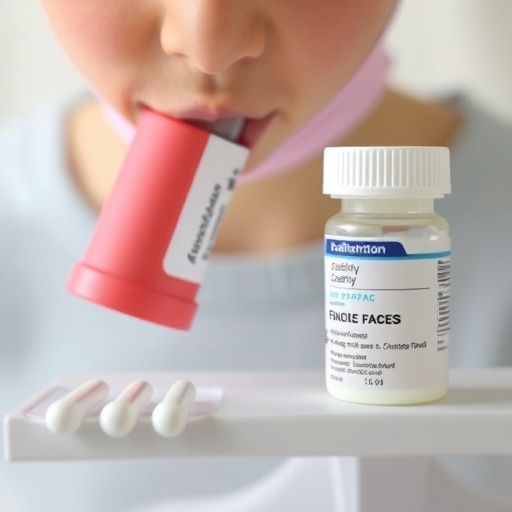
Credit: Florida Atlantic University
Parents and adults spend a lot of time worrying about the influence of friends and peers when it comes to teen substance use – drinking alcohol, binge drinking, marijuana use and other illicit drugs. Is it all about an adolescent's environment, their friends, peers and family, or is there a genetic component that drives their desire for risk taking and novelty?
Teen substance use typically begins in early adolescence and increases linearly – both in terms of prevalence rates and frequency of usePeer – until late adolescence, when a majority of teens report prior use of alcohol or illicit drugs. Conventional wisdom would argue that part of the reason substance use increases in teens is due to their experiences outside of the home, such as their friends and peers. If they hang out with teens who drink, they will probably drink themselves and vice versa. However, to really understand the importance of external influences like peers, you have to account for the influence of genetic factors.
Investigators used a unique sample of twins from Quebec who have been followed since birth. Researchers from Florida Atlantic University and collaborators from the University of Montreal, the University of Quebec, and Laval University, in Canada, looked at the relative role of genetics and environment as sources of influence on individual differences in the development of substance use between early adolescence (age 13) and late adolescence (age 17) in 476 twin pairs (475 boys, 477 girls).
For the study, published in the journal Psychological Medicine, the researchers examined the relative effects of genetic factors as well as shared environmental factors (i.e., environmental experiences, often within the family and at home, that are shared between the two twins) and non-shared environmental factors (i.e., environmental experiences, often outside the family/home, that are unique to each child) on the frequency and rate of increase of substance use in adolescents. Twins studies, which compare genetically identical twins with fraternal twins who share only about 50 percent of their genes, provide the optimal way to tease genetic effects from the environmental effects.
Similar to previous studies, results from the new study show that alcohol and marijuana use increased from early to late adolescence. Genetic as well as shared and non-shared environmental factors explained the amount of substance use; these same factors also partly accounted for inter-individual differences in growth in substance use from ages 13 to 17. Importantly, the researchers' analyses also revealed genetic influences that are unique to the growth in substance use. With each passing year, genetic differences between individuals become more and more important in explaining why substance use increases in some adolescents but not in others.
"Inheritance becomes increasingly more important in terms of determining drinking and drug use as adolescents get older," said Brett Laursen, Ph.D., co-author of the study and a professor and graduate studies coordinator in the Department of Psychology in FAU's Charles E. Schmidt College of Science. "It's a mistake for us to just assume that peers are the only factor responsible for the growth of substance use."
The researchers caution that preventive programs that target personal and familial risk link to substance use may not be optimally effective unless they are complimented by intervention programs that specifically target risk factors related to age specific genetic and non-shared environmental influences.
"We can't take a 'one-size-fits-all' approach for intervention programs across age groups," said Laursen. "We need to recognize that at each age period different risk factors are associated with substance use, because non-shared and genetic factors change with age. We shouldn't just assume that the same interventions are going to work at different age periods, because there appears to be different risk factors predicting substance use at different age periods."
###
Study co-authors are Frank Vitaro, Ph.D., lead author, University of Montreal, Montreal, Canada; Daniel J. Dickson, who received his Ph.D. at FAU; Mara Brendgen, Ph.D., University of Quebec at Montreal, Canada; and Ginette Dionne, Ph.D., and Michel Boivin, Ph.D., Laval University, Quebec, Canada.
About Florida Atlantic University:
Florida Atlantic University, established in 1961, officially opened its doors in 1964 as the fifth public university in Florida. Today, the University, with an annual economic impact of $6.3 billion, serves more than 30,000 undergraduate and graduate students at sites throughout its six-county service region in southeast Florida. FAU's world-class teaching and research faculty serves students through 10 colleges: the Dorothy F. Schmidt College of Arts and Letters, the College of Business, the College for Design and Social Inquiry, the College of Education, the College of Engineering and Computer Science, the Graduate College, the Harriet L. Wilkes Honors College, the Charles E. Schmidt College of Medicine, the Christine E. Lynn College of Nursing and the Charles E. Schmidt College of Science. FAU is ranked as a High Research Activity institution by the Carnegie Foundation for the Advancement of Teaching. The University is placing special focus on the rapid development of critical areas that form the basis of its strategic plan: Healthy aging, biotech, coastal and marine issues, neuroscience, regenerative medicine, informatics, lifespan and the environment. These areas provide opportunities for faculty and students to build upon FAU's existing strengths in research and scholarship. For more information, visit http://www.fau.edu.
Media Contact
Gisele Galoustian
[email protected]
561-297-2676
http://www.fau.edu





